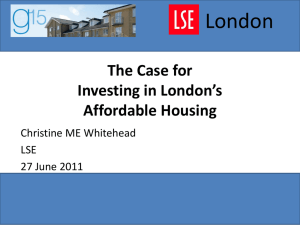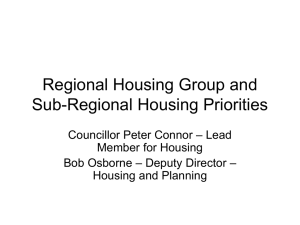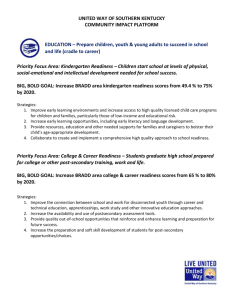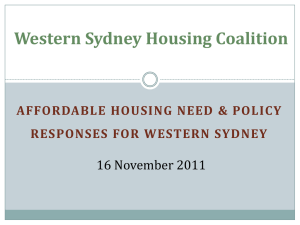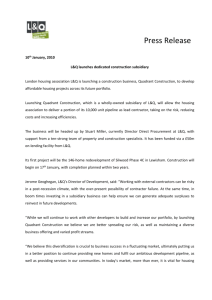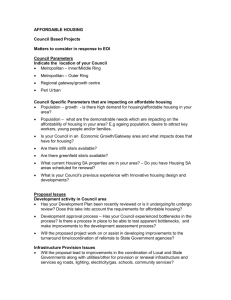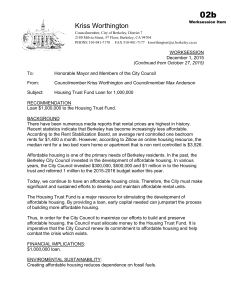Key Concepts and Considerations in Increasing Affordable Housing
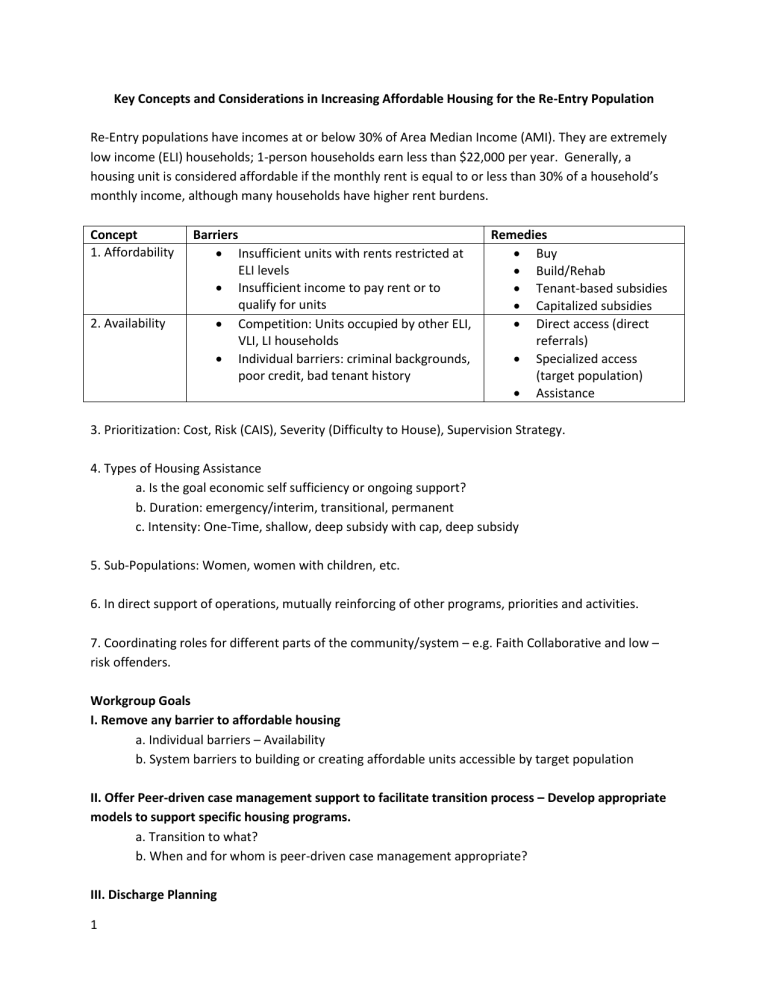
Key Concepts and Considerations in Increasing Affordable Housing for the Re-Entry Population
Re-Entry populations have incomes at or below 30% of Area Median Income (AMI). They are extremely low income (ELI) households; 1-person households earn less than $22,000 per year. Generally, a housing unit is considered affordable if the monthly rent is equal to or less than 30% of a household’s monthly income, although many households have higher rent burdens.
Concept
1. Affordability
2. Availability
Barriers
Insufficient units with rents restricted at
ELI levels
Insufficient income to pay rent or to qualify for units
Competition: Units occupied by other ELI,
VLI, LI households
Individual barriers: criminal backgrounds, poor credit, bad tenant history
Remedies
Buy
Build/Rehab
Tenant-based subsidies
Capitalized subsidies
Direct access (direct referrals)
Specialized access
(target population)
Assistance
3. Prioritization: Cost, Risk (CAIS), Severity (Difficulty to House), Supervision Strategy.
4. Types of Housing Assistance a. Is the goal economic self sufficiency or ongoing support? b. Duration: emergency/interim, transitional, permanent c. Intensity: One-Time, shallow, deep subsidy with cap, deep subsidy
5. Sub-Populations: Women, women with children, etc.
6. In direct support of operations, mutually reinforcing of other programs, priorities and activities.
7. Coordinating roles for different parts of the community/system – e.g. Faith Collaborative and low – risk offenders.
Workgroup Goals
I. Remove any barrier to affordable housing a. Individual barriers – Availability b. System barriers to building or creating affordable units accessible by target population
II. Offer Peer-driven case management support to facilitate transition process – Develop appropriate models to support specific housing programs. a. Transition to what? b. When and for whom is peer-driven case management appropriate?
III. Discharge Planning
1
Performance Measures / Program Goals
Reduce or Prevent Recidivism
Program Type
Housing
Self-Sufficiency
Transitional Housing
Time to Move-In
Housing Retention
Obtain permanent affordable housing
Permanent Supportive Housing
Time to Move-In
Housing Retention
Retention of permanent affordable housing
Attain available benefits Attain available benefits
Completion of educational, vocational, employment program
Increase and maintain earned income
Recovery / Health Access to health insurance and benefits
Access to behavioral health services
Access to health insurance and benefits
Assignment to a medical home
Connection to specialty services
Care coordination
2

